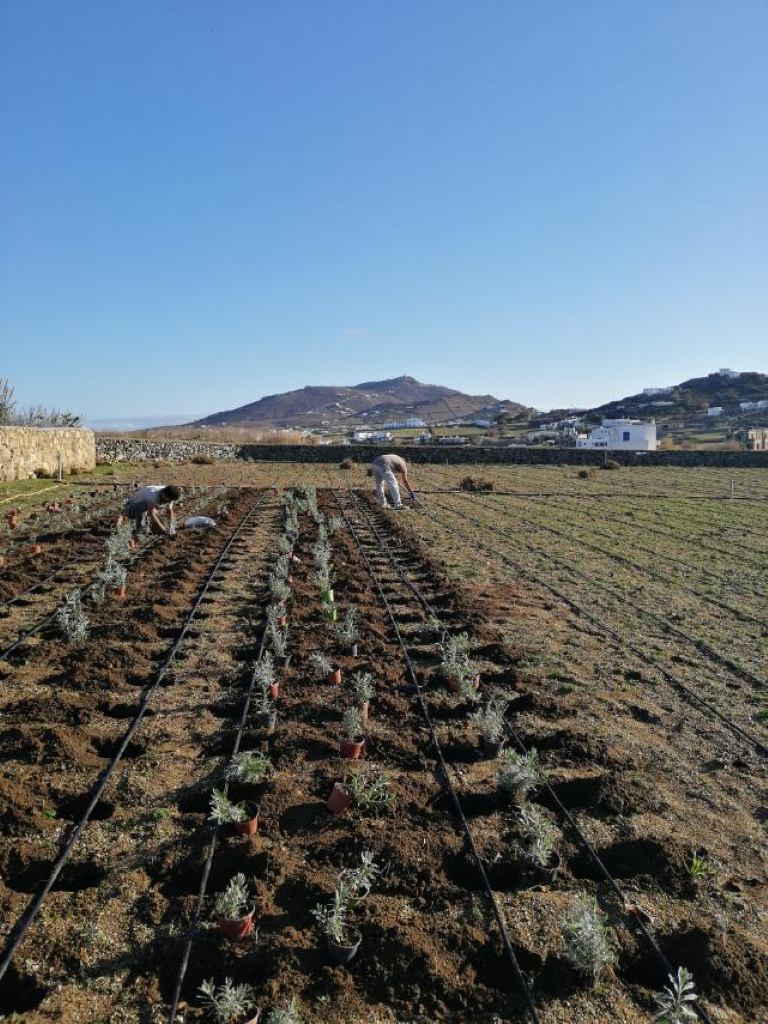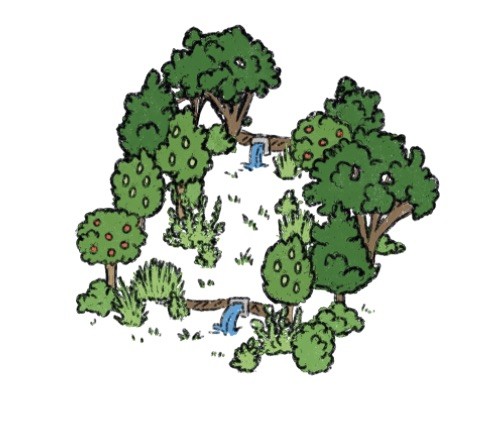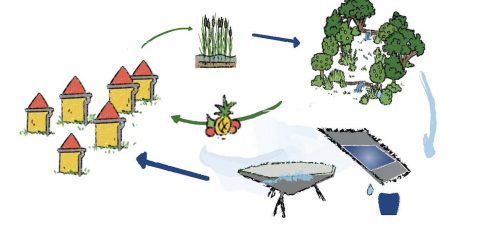
HYDRO4 is a smart residential water management system located in the village of Ano Mera in Mykonos Island. In this site, rainwater, stormwater and surface runoffs are collected and stored into buffering tanks, in order to recharge the aquifer during the wet season, and to be recovered during the dry season. Stormwater is collected through a hybrid bioswale system, rainwater from the 400 m2 available rooftops and surface runoffs from 350 m2 residential yards.
A small part of the water is upgraded to potentially potable water quality standards, using the slow sand filtration process coupled with disinfection.
The majority of water is used for non-potable domestic uses and the irrigation of 0.2 ha lavender using precision irrigation and online monitoring of the water quality. Lavender was chosen to produce high added value essential oil.

Household – Residency

Rainwater

Reclaimed water for irrigation, potable water, herbs, essentials oils
The systems consist of three subsystems:
- Subsystem: Residential Rainwater Harvesting system
- Subsystem: Slow Sand Filtration (SSF) system
- Subsystem: Aquifer Storage & Recovery (ASR) system
Subsystem1 collects the rainwater from house roofs. The rainwater is harvested from about 438 m2 of residential roofs collected through a piping system in a water storage tank of 70m3. The water is reused for domestic non-potable purposes, e.g., washing, flushing toilets, etc.
Subsystem 2 refers to the Slow Sand Filter (SSF), which is a water purification system composed of a sand-bed system which through biological, physical, chemical, and mechanical processes purifies the water to potentially potable level.
In Subsystem 3 the rainwater is collected from two sources: (1) surface runoff and (2) bioswale system. The latter is an open-channel linear drainage system with geomembrane and geotextile that collects and partially treats storm water, and prevents the lavender crop from flooding, as the storm water originating from nearby upstream properties often floods the site, preventing the field from growing crops.
During the wet period, the recovered water of this subsystem is transferred and collected in an open tank and the excess water is stored in the artificial recharge location (AR), where a new well has been constructed to store water in the subsurface. The stored water, collected from both systems described above, is used during the summer period for the irrigation of lavender.




















